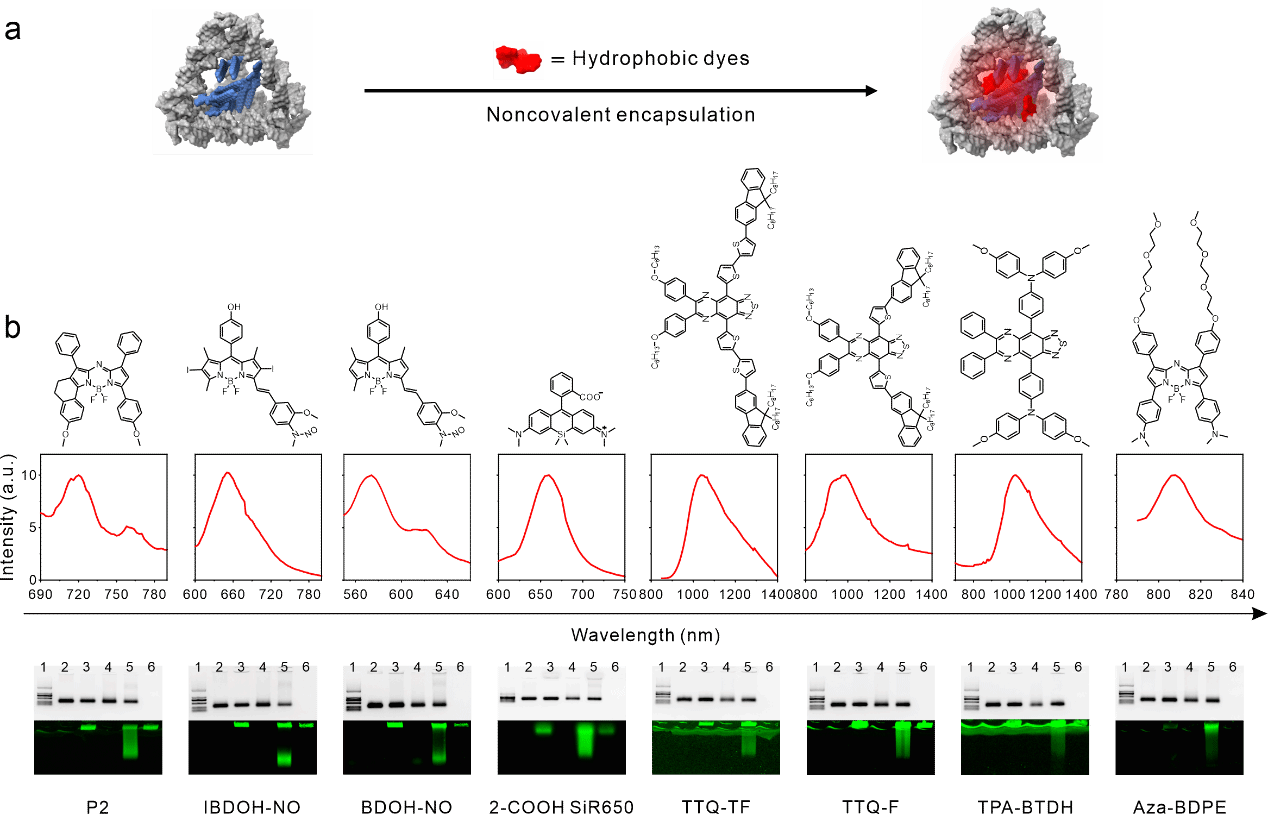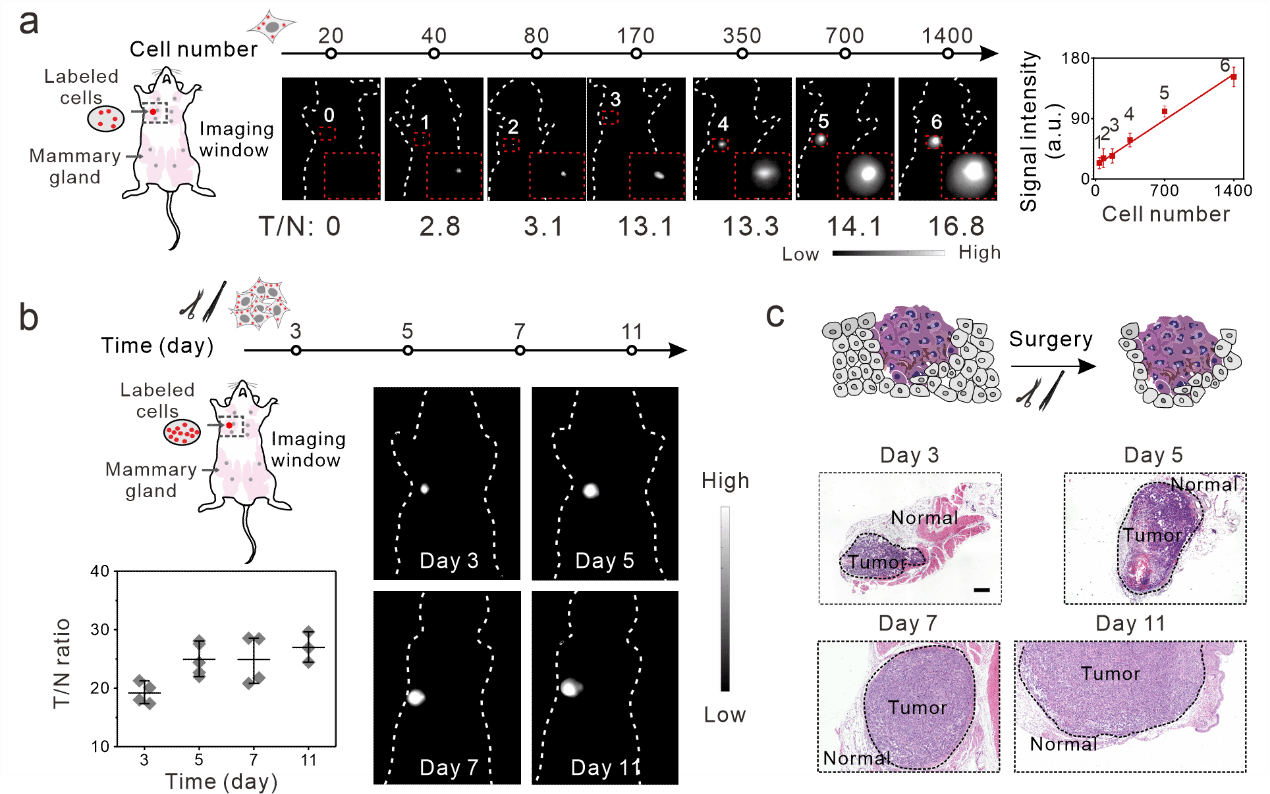搜索


Recently, a research team led by Professor Chunhai Fan from the DNA Storage Research Centre at Zhangjiang Advanced Research Institute, School of Chemistry and Chemical Engineering, Shanghai Jiao Tong University, in collaboration with Shanghai University, East China University of Science and Technology, and others, has developed a novel framework nucleic acid fluorescent probe for in vivo near-infrared region II (NIR-II, 1000–1700 nm) fluorescence imaging and surgical navigation. This probe exhibits high fluorescence brightness, strong tissue penetration, and excellent photostability. It can sensitively detect fluorescence signals approaching individual tumour cells within mouse models, demonstrating the capability for prolonged tracking of tumour growth and metastasis in vivo. The research findings were recently published in the journal Nature Photonics.
Malignant tumours readily undergo invasive micrometastasis, posing significant challenges for early diagnosis and surgical intervention. Existing imaging probes struggle to simultaneously achieve high sensitivity, deep tissue penetration, and tissue specificity. NIR-II fluorescence imaging offers superior tissue penetration, low background autofluorescence, and minimal photon scattering, yielding high signal-to-noise ratios and demonstrating great promise for in vivo imaging and image-guided surgery. However, a universal approach for designing NIR-II probes that simultaneously meet the requirements of ultra-high sensitivity, deep tissue penetration, and tissue specificity remains elusive.
To address these issues, the research team developed a universal platform based on framework nucleic acids capable of encapsulating various types of hydrophobic fluorescent dyes. Specifically, researchers constructed framework nucleic acid fluorescent dots (FDF dots) with size and shape resolution capabilities by non-covalently encapsulating the small-molecule fluorescent dye Sq964 within hydrophobic nanocavities. This material exhibits ultra-high brightness, centimetre-scale deep tissue penetration, high photostability, and favourable tumour retention rates. The research team demonstrated near-single-cell-level ultra-high-sensitivity NIR-II cancer imaging using this material and successfully applied it to image-guided surgical resection of minute tumour lesions.


This work was supported by the National Key R&D Programme of China, the National Natural Science Foundation of China, and the 2022 Shanghai Municipal Science and Technology Innovation Action Plan (Basic Research).
Paper link: https://www.nature.com/articles/s41566-024-01543-7
Authors: Fan Chunhai's research group
Contributing institution: DNA Storage Research Centre






 Address:No.1308 Keyuan Road, Pudong District, Shanghai
Address:No.1308 Keyuan Road, Pudong District, Shanghai Phone:86-21-54740000
Phone:86-21-54740000 E-mail:zias@sjtu.edu.cn
E-mail:zias@sjtu.edu.cn